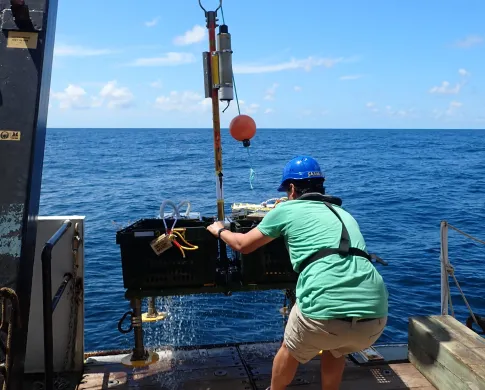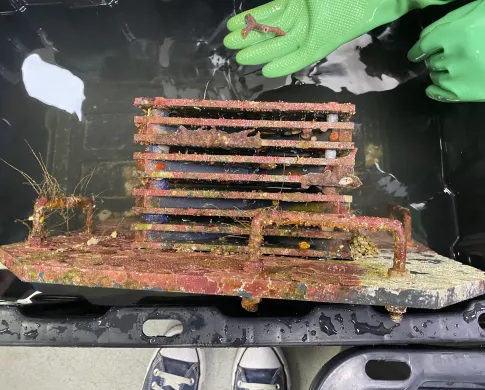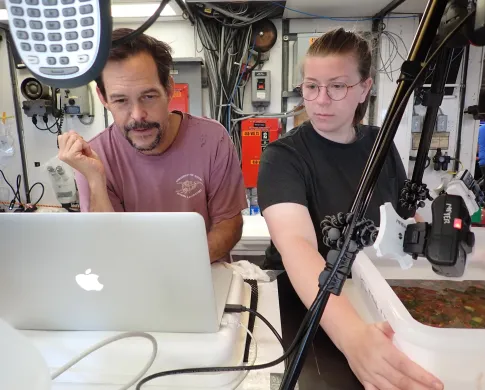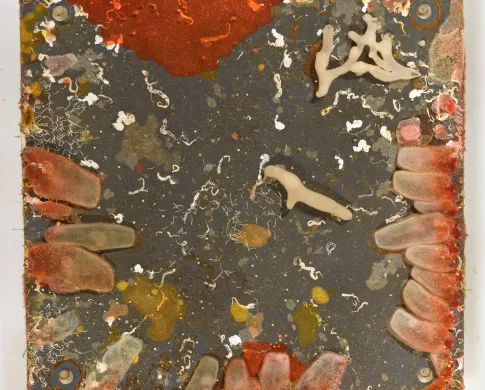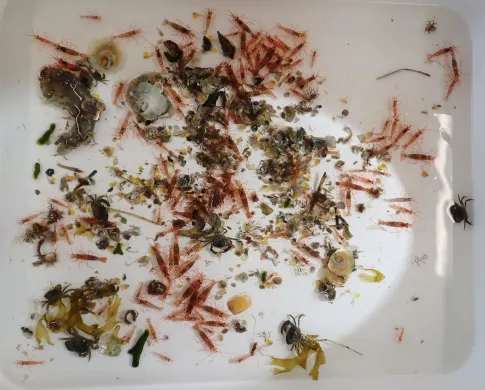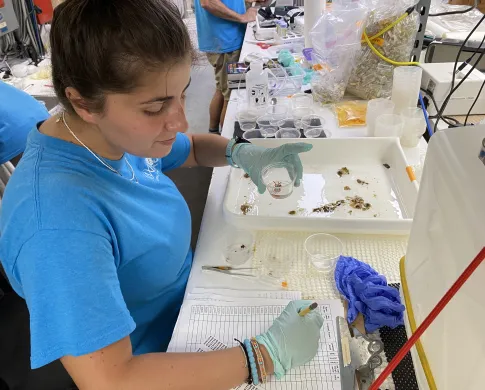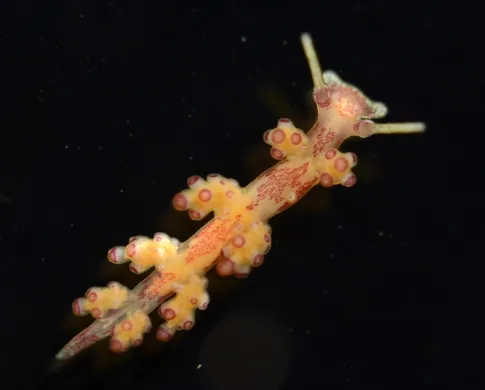Image
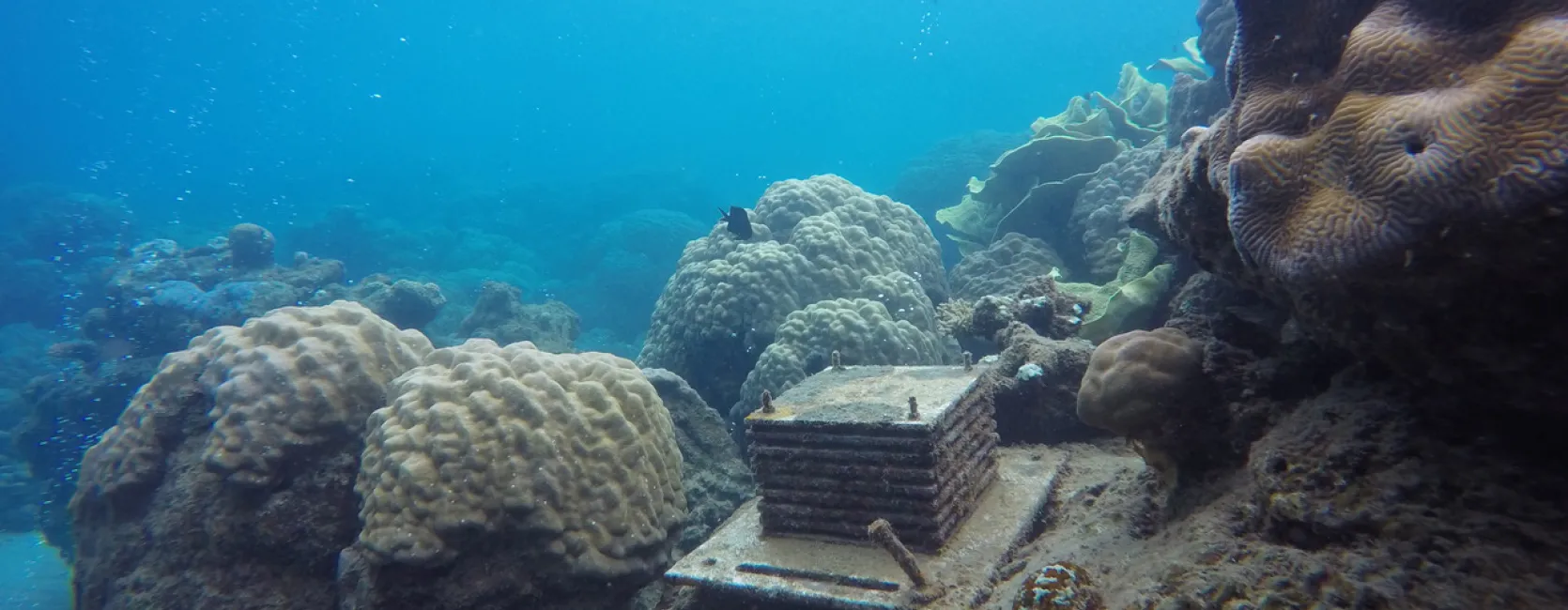

A large proportion of marine life on the sea floor is sessile – attached to the bottom – and forms crusts and films on hard substrate. These organisms, such as sponges and sea squirts, in turn provide habitat and food to mobile creatures like shrimp, snails, and worms that live hidden among the nooks and crannies. Such cryptobenthic creatures are challenging for scientists to sample and study even in easy to access shallow water habitats. The challenges of studying hard to detect species are even greater in deeper water benthic habitats, so the NMNH-MDBC team, with support from the Smithsonian Global ARMS Program, is deploying Autonomous Reef Monitoring Structures (ARMS) to help capture, describe and quantify cryptobenthic biodiversity.
ARMS are standardized 3D benthic creature-collectors comprised of stacks of plates that mimic the complex structure of the sea floor:
ARMS are installed on the sea floor for a period of time, allowing sessile creatures to colonize the plate surfaces and mobile ones to move in. The ARMS are then recovered by a team and taken apart to see what creatures are present. ARMS provide a picture of the benthic life in a particular region, and, because ARMS are a standard size and configuration, the resulting biodiversity census allows scientists to directly compare communities at different sites or see how a site changes over time.
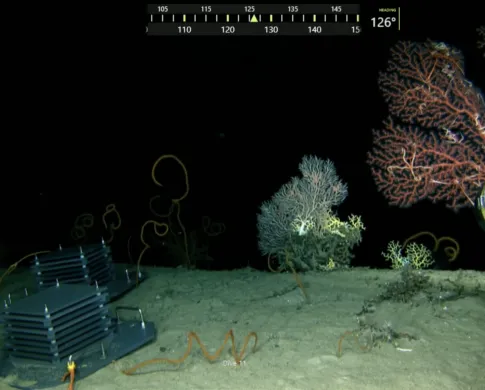
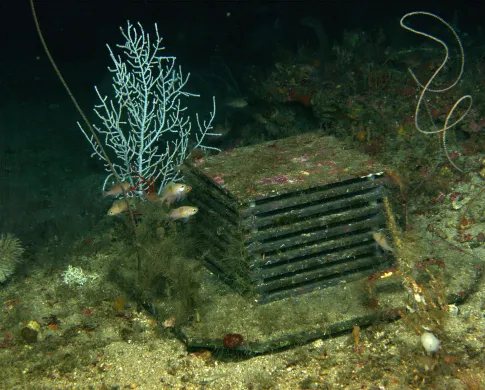
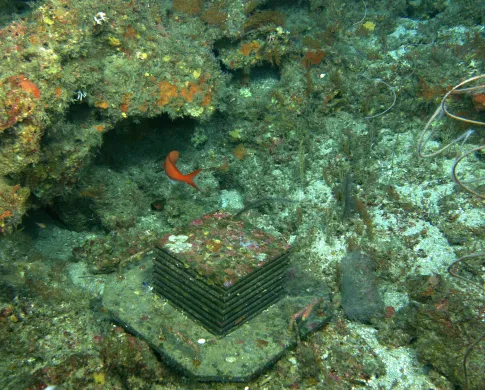
To retrieve ARMS from the sea floor, the units are first covered with a crate to capture the mobile creatures living inside. ARMS in shallow areas can be installed and retrieved by divers, but in mesophotic and deep habitats this is handled by a Remotely Operated Vehicle (ROV), which uses a manipulator arm to cap the units with a specialty latching crate.
Once the ARMS is on the surface and in the ship’s lab, it is taken apart for scientists to count, document and preserve everything inside (See Specimen Curation and Biodiversity Characterization). Back at NMNH, DNA from each ARMS is extracted and sequenced to derive a genetic representation of the whole community. These resulting ARMS eDNA (see eDNA Reference Library) profiles are used to compare whole benthic communities across different locations or through time.
